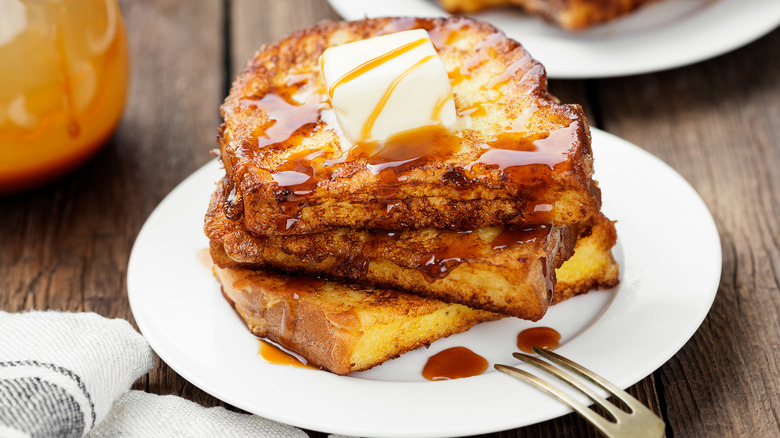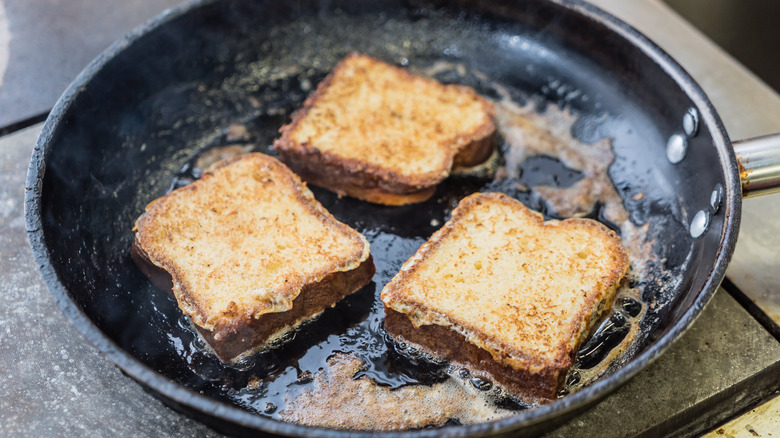The Reason You Should Use Butter And Oil To Fry French Toast
Correction 5/31/22: A previous version of this post stated that combining butter and oil will help control the smoke point of the mix. Combining the two does not impact the smoke point of butter, but can make the burnt flavor less noticeable.
What's better than thick and eggy French toast on a lazy Sunday morning? Maybe only having someone make it for you, delivered on a tray — preferably with some ripe berries, warm maple syrup, and French press coffee — as you lounge in bed. A girl can dream, can't she?
Making French toast worthy of that dream begins with the right bread. Martha Stewart recommends using a dense bread such as brioche or challah. The size of the slice also matters. Bon Appétit recommends a thickness of about 1-inch, which will allow it to cook all the way through and deliver that soft-on-the-inside, slightly-crispy-on-the-outside texture you crave.
Now that you've got the ideal slice of bread soaking in a batter of fresh eggs, milk, and salt, with perhaps a touch of vanilla extract, what can you do during the cooking process to ensure your French toast will turn out perfectly?
A blend of butter and oil helps prevents any smoking and burning
Traditionally, butter is first added to the pan before frying up French toast. But using butter alone means you run the risk of burning it, which will affect the taste of your French toast.
Fine Cooking explains that — while adding oil to your butter won't impact the smoke point of the butter — it does dilute the butter and can make it less noticeable if you overcook the fat and take it beyond brown to slightly burnt. When it comes to the type of oil to use in the pan, the Kitchn suggests a neutral oil, such as canola, so it won't overpower the butter flavor. Don't forget to clean out the pan after every batch of French toast and then use a new combination of the oil and butter (via Bon Appétit).
And so that amazingly caramelized French toast doesn't cool down after it's been cooked, Martha Stewart recommends putting the cooked slices on a wire rack, atop a baking sheet, in an oven that has been warmed to 250 degrees. That way they'll be just as warm and tasty as the last pieces you take from the pan.
After that, it's a matter of choosing your toppings and digging in — preferably from the comfort of your bed.

